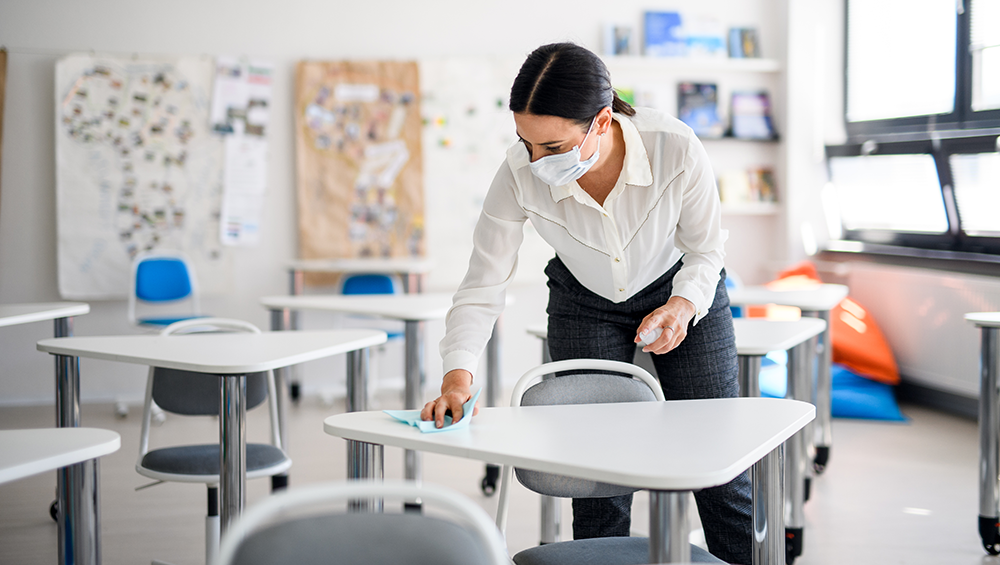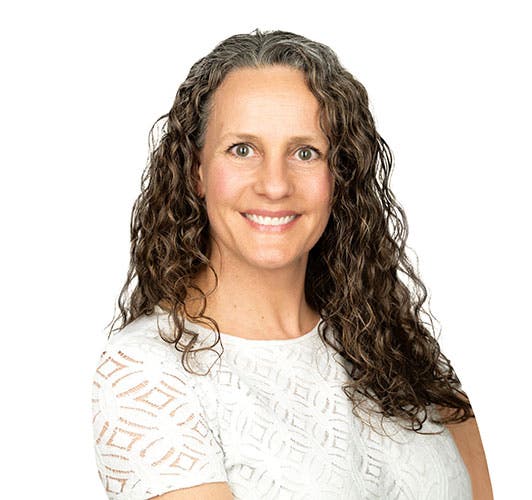The Cleaner Within You — Fundamentals to Help Do the Job Well
Have you been asked to take on the role of part time cleaner in your facility or business? If so, welcome to the club!

With the COVID-19 virus still widespread across the U.S., employers everywhere, from schools, offices, athletic facilities, movie theaters, hotels, restaurants, hospitals, and more, are asking non-cleaning staff to clean.
In a recent back to school survey, more than half (58%) of 120 educators polled responded that they would be asking current staff members/teachers to do some cleaning and disinfecting as part of their regular duties. In other facilities, box office staff, airline gate attendants, check-out clerks, nurses, receptionists and more are being asked to help out with daily cleaning and disinfecting of frequently touched and shared surfaces. The CDC has even stated in the Reopening Guidance for Cleaning and Disinfecting Public Spaces, Workplaces, Businesses, Schools, and Homes, that “This guidance is intended for all Americans.”
Depending on your personality and past experiences, you may have had any one of these three reactions:
- What? No way, cleaning isn’t in my job description and I don’t have time for that!
- Great, cleaning is easy enough. I just use common sense, right?
- OK, but I don’t know how to clean properly. Where do I get training?
The good news is that no matter which group you fall into, the COVID-19 pandemic is offering up an opportunity to learn about something many of us wouldn’t have taken the time to do before. And that is how to clean and disinfect properly.
The truth is, although many don’t realize it, properly cleaning and disinfecting surfaces takes education, training, and even practice to perfect. In fact, there is an entire industry focused on helping to ensure that cleaning professionals get what they need to do their job well. IICRC, ISSA, and AHE are just a few examples of organizations with this goal in mind.
While your employer is ultimately responsible for making sure you are educated and trained, here are some basics to help get you started. You can use this information to talk to your employer about what’s important, and potentially even as a starting place for a “new cleaner” training guide for your facility.
What is the difference between cleaning, sanitizing, and disinfecting?
- Cleaning is the physical removal of unwanted matter, including dirt, dust, soil and some pathogens.
- Sanitizing is the killing of bacteria, and is most often applicable in food service.
- Disinfecting destroys or inactivates both the bacteria and viruses (like SARS-CoV-2) on hard, nonporous surfaces.
Does cleaning always need to be done before disinfecting?
No. Cleaning and disinfecting can be done at the same time if these criteria are met:
- The surface is free of visible soil.
- The product is a “one-step” cleaner disinfectant, which means the product is both a cleaner and disinfectant.
How can I be sure I’m using a product that kills “xyz” germ?
- Check the back label on the product. If the product has an EPA Registration number and says that it kills “xyz” germ then you can be confident that the product works. Just make sure to also read the directions for use, including the dilution ratios if appropriate, on the label and follow them in practice.
- For SARS-CoV-2, the virus that causes COVID-19, make sure you are using an EPA-registered product on list N.
- Never mix cleaning products! This is important for efficacy AND safety.
What else is important to understand about the product, and where can I get the information?
- What the contact time is — see the product label
- What Personnel Protective Equipment (PPE) and precautions are needed to protect you from:
- The product — see the product label
- The contaminants (e.g., SARS-CoV-2) in the environment — check with your employer and the CDC website.
- How to store and dispose of the product safely — see the product label
- Mixing/dilution information — see the product label
What else do I need to know to clean and disinfect properly?
- Know what you are responsible for and how often you should be cleaning and disinfecting. Ask your employer for clarity if not clear.
- Focus on preventing cross contamination — this is what happens when germs are inadvertently spread from one area to another. Here are some best practices to help avoid cross contamination during cleaning and disinfecting:
- Always clean from top to bottom so the dirt, dust and pathogens that fall down will get cleaned up as you move lower.
- Always clean from clean to dirty to avoid spreading germs from dirty areas to clean areas.
- Fold each cloth until it is the size of your hand. After each use, find a clean side of the cloth to use on the next surface.
- Know what jobs require the professional custodial/EVS team (e.g., blood and body fluid clean-up) and call them when needed instead of doing it yourself.
COVID-19 has presented us with quite a challenge to say the least. Fortunately, there have also been a few “silver linings” along the way. One is the knowledge and skills about cleaning and disinfecting properly that few had before. If you have been asked to take on additional cleaning and disinfecting responsibilities as part of your current role, as in any profession, education and training on how to do the job right are essential. This will not only help ensure goals of the job (e.g., to reduce the spread of germs in the environment) are achieved, but to also ensure that the job is done safely.
For the latest information on COVID-19 and variants, visit our CloroxPro COVID-19 Hub.






